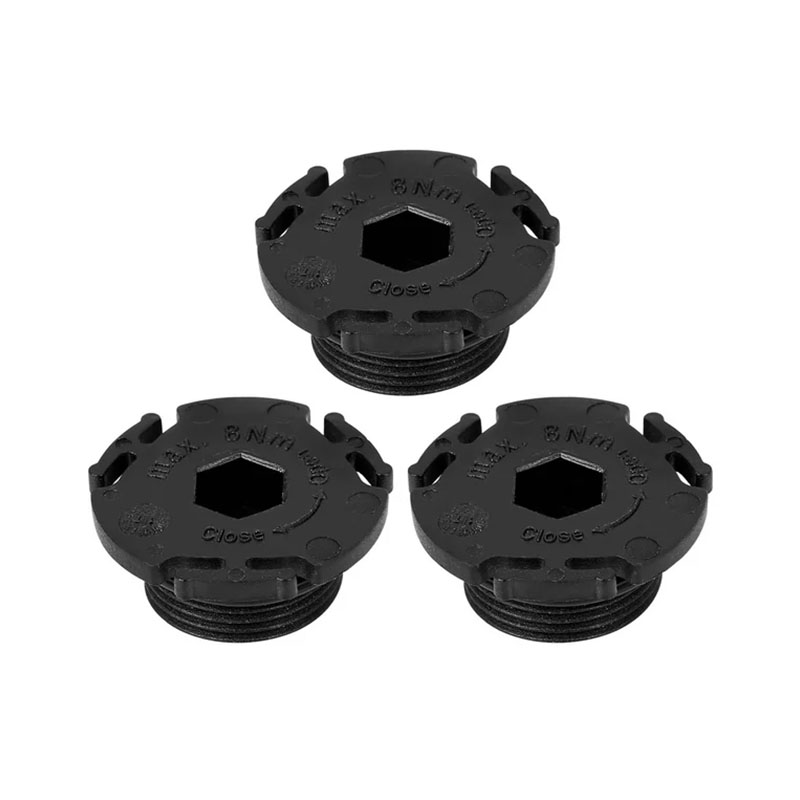17x29x5 Oil Seal Specifications and Applications for Efficient Sealing Solutions
Understanding Oil Seals A Focus on the 17x29x5 Specifications
Oil seals, also known as rotary shaft seals, play a crucial role in machinery and equipment across various industries. They are designed to prevent the leakage of lubricants while simultaneously keeping contaminants out of the system. In this article, we will delve into the specifics of the 17x29x5 oil seal, including its dimensions, materials, applications, and importance in mechanical systems.
Dimensions Explained
The designation 17x29x5 refers to the dimensions of the oil seal in millimeters. The numbers represent the following
- 17 mm This is the inner diameter, which indicates the size of the shaft that the seal will be mounted on. A snug fit is necessary for effective sealing. - 29 mm This is the outer diameter, which determines how large the sealing surface is that interfaces with the housing. - 5 mm This denotes the width or the thickness of the seal.
These specific measurements ensure that the oil seal can adequately perform its function without compromising the integrity of the sealing surfaces.
Materials Used
Oil seals are typically made from a variety of materials, each chosen for its unique properties. Common materials include
- Nitrile Rubber (NBR) This is the most common material used for oil seals due to its resistance to petroleum-based oils and high wear resistance. NBR seals are suitable for a wide range of temperatures. - Fluoroelastomer (FKM) Known for its exceptional chemical resistance, FKM is used in more demanding applications where exposure to aggressive chemicals occurs. - Polyurethane Offering excellent abrasion resistance, polyurethane seals can be utilized in applications with greater wear and tear.
Selecting the right material for the oil seal is vital for ensuring its longevity and reliability in specific operational environments.
oil seal 17x29x5

Applications of 17x29x5 Oil Seals
The 17x29x5 oil seal is commonly found in various industrial applications, including
1. Automotive Engines In vehicles, oil seals are crucial for preventing oil leaks from engines and transmissions. They help maintain optimal lubrication, which is essential for engine efficiency and longevity.
2. Hydraulic Systems Hydraulic machinery relies on oil seals to keep hydraulic fluid contained, ensuring proper operation and functionality.
3. Pumps and Compressors In both pumps and compressors, oil seals help maintain pressure and prevent fluid loss, thereby enhancing performance and reducing wear.
4. Industrial Equipment Many types of machinery, from manufacturing equipment to agricultural machinery, utilize the 17x29x5 oil seal to prevent contamination and maintain the efficiency of moving parts.
Importance of Proper Installation
The effectiveness of an oil seal significantly depends on its proper installation. Improper positioning can lead to early failure, resulting in costly downtime and repairs. When installing a 17x29x5 oil seal, it is essential to ensure that the sealing surfaces are clean and that the seal is positioned correctly. One must also consider the orientation of the seal, as some seals have specific directional requirements.
Conclusion
Oil seals like the 17x29x5 are vital components in many machines and systems, ensuring efficient functionality and longevity. Understanding the dimensions, materials, applications, and installation requirements can aid in making the right choice for any specific industry need. Whether in automotive engines, hydraulic systems, or industrial machinery, a well-chosen and properly installed oil seal can make a significant difference in performance and reliability. As industries continue to evolve, the demand for high-quality oil seals will persist, underlining their importance in maintaining operational efficiency and reducing maintenance costs.
-
Understanding the Front Main Engine Seal: Purpose, Maintenance, and Installation
News Jul.29,2025
-
Understanding O-Rings and Seal Rings: Types, Applications, and Custom Solutions
News Jul.29,2025
-
Understanding Crankshaft Oil Seals: Rear Seals, Pulley Seals, and Their Role in Engine Integrity
News Jul.29,2025
-
The Importance of Front and Rear Crankshaft Seals in Engine Performance and Oil Management
News Jul.29,2025
-
Crank Oil Seals: Functions, Types, and Cost Considerations in Engine Maintenance
News Jul.29,2025
-
A Comprehensive Guide to O-Rings and Seals: Types, Materials, and Global Applications
News Jul.29,2025
-
Mastering Diesel and Performance Engine Maintenance: A Guide to Critical Oil Gaskets
News Jul.28,2025
Products categories















